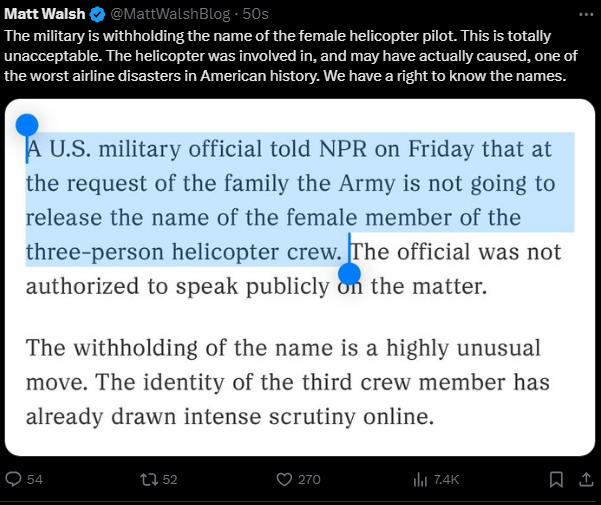Ok, every flight is a training flight in the Blackhawk. They don’t just fly “missions “ all the time. They have monthly flight hour requirements, as well as semi annual and annual, and certain part of those hours are required to be under NVG’s. And that doesn’t even account for check rides or APART rides. As far as why are they flying into Reagan, because it’s an airport and that’s what blackhawks do… they fly to airports.
As far as how something like this could happen, there’s are a lot of factors that go into a NVG mishap like this. What Gen NVG’s were they utilizing? The newer phosphorus NVG’s are damn bright unless you’re operating under 0 illum. That’s why a bunch of the crews actually prefer the older green tubes vs the phosphorus. When you’re flying at that altitude, it is easy to mistake headlights or other flashing beacons/ lights for aircraft, especially in a highly lit up situation near a major city/ airport, that’s why you constantly have to fly NVG’s to maintain profiency, it’s a perishable trait. There’s also lots of emergency procedures you practice during “training” flights and different landing types. It’s not like the only time you respond to an emergency, is when you’re in an actual emergency. It’s easy to lose track of another aircraft under a sea of bright lights.
I’m curious if the pilots mistook the aircraft taking off as the one that ATC was referring to pass behind. Following the blackhawks flight path, it didn’t appear as they tried any evasive actions, which lends me to question having actually had eyes on the incoming aircraft. Or, there was like 3 aircraft in a row coming in to land and maybe they didn’t see the first one and thought one of the other ones was the one ATC was referring to. The fact they were flying at above 300’ in a corridor where the max altitude was 200’. Is definitely crew error in regard to the crash. I also question the crew coordination in the Blackhawk, as all 3 of the crew members should have acknowledged the incoming aircraft and confirmed it with one another. The black box will shed more light on what they saw and were saying while everything was going on. I also almost question whether or not the PC might have been inside the aircraft doing radio calls and other stuff like monitoring the instruments while ATC was making all the calls. I know quite often, the crew will minimize communication when there’s heavy radio chatter. Seeing as they were pretty much flying straight towards one another, the crew chief in the back probably offered little airspace surveillance to the front and was most likely scanning from the about 1 o’clock to the 6, if the crew chief was on the right, and would be partially obscured from potentially seeing the aircraft coming straight at them. We’ve always been trained to keep our heads on a swivel when we’re flying on the Hudson down by LaGuardia and JFK simply due to, the sheer volume of traffic that’s around.
Without hearing more than 30 seconds of the ATC tower, kind of hard to really know what conversations were going on between the 60 and the tower, and because the 60 was replying on a different frequency to tower, just makes it that much harder. As in 90+% of all aviation accidents, I think we’re definitely going to find out this unfortunate accident, was at a minimum pilot error, and potentially ATC error as I would have thought there would have been more urgency in the controllers voice seeing on radar they were on a collision course. Once again, just a different perspective and it’s all speculation, because I wasn’t there. Luckily though, in due time, I will unfortunately have to listen to the last minutes of the Ill fated flight and will have a better a clearer understanding of what the crew of the 60 actually heard, saw, and said. Such a tragedy, regardless.










